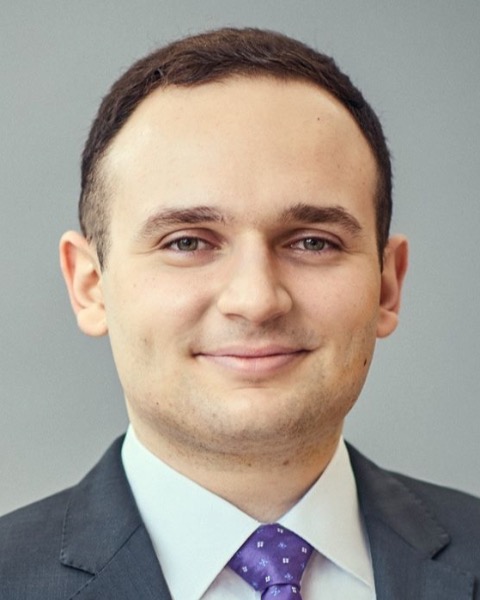Electrophysiology
POSTER SESSION #1
P119 - IMPACT OF WAIT-TIMES FOR ATRIAL FIBRILLATION ABLATION ON CUMULATIVE HEALTHCARE COSTS
Thursday, October 23, 2025
5:30pm - 6:30pm ET
Location: Board 37

Denis Qeska, MD
Internal Medicine Resident
University of British Columbia
Toronto, Ontario, Canada
Presenting Author(s)
Background: Atrial fibrillation (AF) is the most common sustained cardiac arrhythmia associated with an increased risk of hospitalization, stroke, myocardial infarction, and mortality. Mounting evidence supports catheter ablation treatment for AF, but is associated with substantial wait-times exceeding two years in Canadian regions. These wait-times are associated with adverse events prior to and following receipt of ablation. The economic consequences of wait times have not been characterized. Our objective was to determine drivers of healthcare expenses by phase of cost and assess contribution of wait-times among patients receiving AF ablation.
METHODS AND RESULTS: This observational cohort study included patients who received AF ablation to treat AF in Ontario, Canada between April 2016 and March 2023. Our primary outcome of interest was per-patient cumulative healthcare costs, presented by phase of cost from the date of AF diagnosis to 1 year following ablation. Hierarchical generalized linear models with a logarithmic link and gamma distribution assessed drivers of cost by phase. The primary exposure was wait-times defined as diagnosis-to-ablation, diagnosis-to-referral, and referral-to-ablation times.
Our cohort included 8,403 individuals who received de novo AF ablation with a median diagnosis-to-ablation time of 29 (IQR: 16-50) months. The median (IQR) pre-ablation cost was $15,353 ($8,424-$27,776) while the median 1-year cost post-ablation was $19,929 ($16,595-$25,702). Physician billing was the greatest contributor to pre-ablation costs, while day surgery costs, including the ablation procedure contributed most to post-ablation costs. Diagnosis-to-ablation time was significantly associated with increased pre-ablation costs (Rate ratio [RR] 1.02 per month, 95% CI 1.02-1.02). Wait-times were positively associated with post-ablation costs (RR 1.001 per month increase of diagnosis-to-ablation time, 95% CI 1.000-1.001), albeit with a smaller magnitude. Medical comorbidity, including heart failure (RR 1.28, 95% CI 1.24-1.33) and Charlson score (RR 1.17, 95% CI 1.15-1.20), was significantly associated with increased pre-ablation costs, and a similar association was observed post-ablation.
Conclusion: Patients receiving AF ablation experience distinct phases of cost accumulation and wait-times for ablation have a limited contribution to cumulative costs.
METHODS AND RESULTS: This observational cohort study included patients who received AF ablation to treat AF in Ontario, Canada between April 2016 and March 2023. Our primary outcome of interest was per-patient cumulative healthcare costs, presented by phase of cost from the date of AF diagnosis to 1 year following ablation. Hierarchical generalized linear models with a logarithmic link and gamma distribution assessed drivers of cost by phase. The primary exposure was wait-times defined as diagnosis-to-ablation, diagnosis-to-referral, and referral-to-ablation times.
Our cohort included 8,403 individuals who received de novo AF ablation with a median diagnosis-to-ablation time of 29 (IQR: 16-50) months. The median (IQR) pre-ablation cost was $15,353 ($8,424-$27,776) while the median 1-year cost post-ablation was $19,929 ($16,595-$25,702). Physician billing was the greatest contributor to pre-ablation costs, while day surgery costs, including the ablation procedure contributed most to post-ablation costs. Diagnosis-to-ablation time was significantly associated with increased pre-ablation costs (Rate ratio [RR] 1.02 per month, 95% CI 1.02-1.02). Wait-times were positively associated with post-ablation costs (RR 1.001 per month increase of diagnosis-to-ablation time, 95% CI 1.000-1.001), albeit with a smaller magnitude. Medical comorbidity, including heart failure (RR 1.28, 95% CI 1.24-1.33) and Charlson score (RR 1.17, 95% CI 1.15-1.20), was significantly associated with increased pre-ablation costs, and a similar association was observed post-ablation.
Conclusion: Patients receiving AF ablation experience distinct phases of cost accumulation and wait-times for ablation have a limited contribution to cumulative costs.
